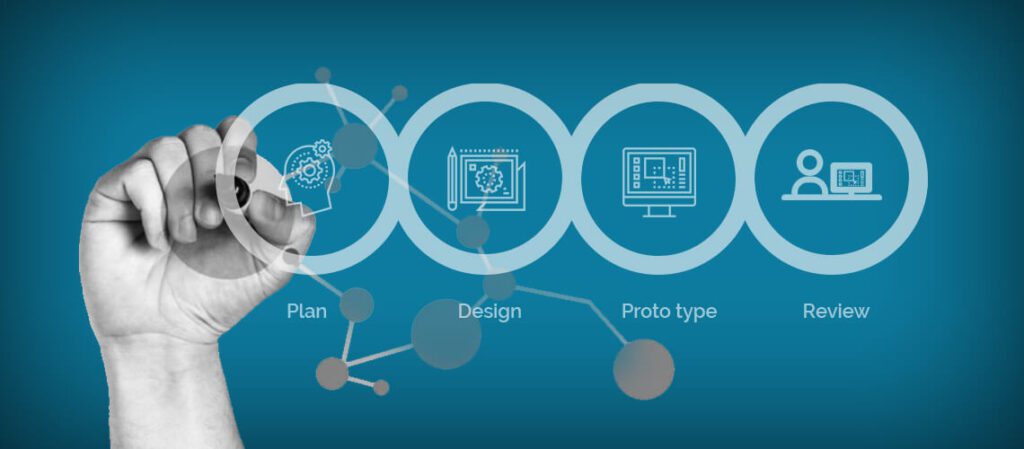Artificial Intelligence - AI in the Workforce
Learn more about Artificial Intelligence - AI in the workforce in this article.
Introduction#
An increase in data usage demands a network effectiveness strategy, with a primary focus on lowering overall costs. The sophistication of networks is expanding all the time. The arrival of 5G on top of existing 2G, 3G, and 4G networks, along with customers' growing demands for a user platform comparable to fibre internet, places immense strain on telecommunication operators handling day-to-day activities (Mishra, 2018). Network operators are also facing significant financial issues as a result of declining revenue per gigabyte and market share, making maximizing the impact on network investment strategies vital for existence.

How can businesses use AI to change the way businesses make network financial decisions?#
From sluggish and labor-intensive to quick, scalable, and adaptable decisions - The traditional manual planning method necessitates a significant investment of both money and time. Months of labor-intensive operations such as data gathering, aggregation of data, prediction, prompting, proportioning, and prioritizing are required for a typical medium-sized system of 10,000 nodes. Each cell is simulated separately using machine learning, depending on its special properties. Several Key performance indicators are used in multivariable modeling approaches to estimate the efficiency per unit separately. By combining diverse planning inputs into the application, operators may examine alternative possibilities due to the significant reduction in turnaround time (Raei, 2017).
Moving from a network-centric to a user-centric approach - Basic guidelines are commonly used to compare usage to bandwidth. Customer bandwidth is influenced by some parameters, including resource consumption, such as DLPRB utilization. Individual unit KPI analysis utilizing machine learning solves this inefficacy, with the major two processes involved being traffic prediction and KPI predictions. The Key performance indicator model is a useful part of cognitive planning that is specific to each cell and is trained every day using the most up-to-date data. The per-cell model's gradient and angles are governed by its unique properties, which are impacted by bandwidth, workload, broadcast strength, as well as other factors (Kibria et al., 2018). This strategy provides more granularity and precision in predicting each cell's KPI and effectiveness.

From one-dimensional to two-dimensional to three-dimensional - Availability and efficiency are frequently studied in a one-dimensional manner, with one-to-one mappings of assets such as PRB to quality and productivity. Nevertheless, additional crucial elements such as broadcast frequency or workload have a significant impact on cell quality and productivity. Optimal TCO necessitates a new method of capacity evaluation that guarantees the correct solution is implemented for each challenge (Pahlavan, 2021).
Candidate selection for improvement - Units with poor wireless reliability and effectiveness are highlighted as candidates for improvement rather than growth using additional parameters such as radio quality (CQI) and spectrum efficiency in cognitive planning. As a first resort, optimization operations can be used to solve low radio-quality cells to increase network capacity and performance. Instead of investing CAPEX in hardware expansion, cognitive planning finds low radio-quality cells where capacity may be enhanced through optimization (Athanasiadou et al., 2019).
Candidate selection for load-balancing#
Before advocating capacity increase, cognitive planning tools will always model load-balancing among co-sector operators. This is done to eliminate any potential for load-balancing-related benefits before investing. The load-balancing impact is modeled using the machine-learning-trained KPI model by assuming traffic shifts from one operator to another and then forecasting the efficiency of all operators even in the same section (He et al., 2016). If the expected performance after the test does not satisfy the defined experience requirements, an extension is suggested; alternatively, the program generates a list of suggested units for load-balancing.
Prioritization's worth for AI in the workforce#
When network operators are hesitant to spend CAPEX, a strong prioritizing technique is vital to maximizing the return on investment (ROI) while guaranteeing that even the most relevant aspects are handled. This goal is jeopardized by outdated approaches, which struggle to determine the appropriate response and have the versatility to gather all important indicators. In the case of network modeling, load corresponds to the number of consumers, utilization (DLPRB utilization) to the space occupancy levels, and quality (CQI) to the size (Maksymyuk, Brych and Masyuk, 2015). The amount of RRC users, which is near to demand as a priority measure, is put into the prioritizing procedure, taking into account the leftover areas. Further priority levels are adjusted based on cell bandwidth, resulting in a more realistic order.
Developers give ideal suggestions and growth flow (e.g. efficiency and load rebalancing ahead of growth) and generate actual value by combining all of these elements, as opposed to the conventional way, which involves a full examination of months of field data:
- Optimization activities are used as a first option wherever possible, resulting in a 25% reduction in carrier and site expansions.
- When compared to crowded cells detected by operators, congested cells found by cognitive planning had a greater user and traffic density, with an average of 21% more RRC users per cell and 19% more data volume per cell. As a result, the return on investment from the capacity increase is maximized (Pahlavan, 2021).
- Three months before the experience objective was missed, >75 percent of the field-verified accuracy in determining which cells to grow when was achieved.
- Reduce churn
Conclusion for AI in the workforce#
The radio access network (RAN) is a major component of a customer service provider's (CSP) entire mobile phone network infrastructural development, contributing to around 20% of a cellular manufacturer's capital expenditures (CapEx). According to the findings, carriers with superior connection speeds have greater average revenue per user (+31%) and lower overall turnover (-27 percent) (Mishra, 2018). As highlighted in this blog, using Machine learning and artificial intelligence for capacity management is critical for making intelligent network financial decisions that optimize total cost of ownership (TCO) while offering the highest return in terms of service quality: a critical pillar for customer service provider's (CSP) commercial viability.
Learn more about Nife to be informed about Edge Computing and its usage in different fields https://docs.nife.io/blog

